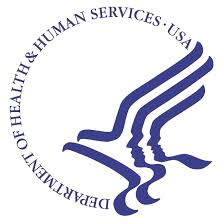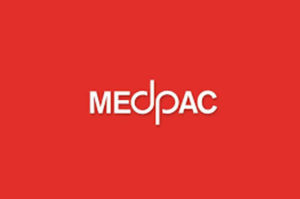The following is the latest health policy news from the federal government for the week of December 12-15. Some of the language used below is taken directly from government documents.
 White House
White House
- The White House has unveiled its “COVID-19 Winter Preparedness Plan,” the major components of which are expanding easy access to free COVID-19 testing options in the winter; making vaccinations and treatments readily available as cases rise; preparing personnel and resources; and focusing on protecting the highest-risk Americans. Learn more about the plan from this White House fact sheet and go here for a transcript of the White House press briefing about the plan.
Congress
- Yesterday the House passed a one-week continuing resolution (CR) that will prevent the federal government from shutting down when the current CR ends tomorrow, December 16; the Senate will take up that bill although some senators have expressed their objection to a short-term CR. Appropriators have agreed on the spending limits for FY 2023 spending bills and hope to pass an omnibus spending bill encompassing all 12 appropriations bills before next Friday, December 23. House minority leader Kevin McCarthy, backed by other House Republicans, objects to passing an omnibus spending bill before the end of the year. Instead, Mr. McCarthy is advocating a longer-term CR that will enable House Republicans in the new Congress to exert their control over the FY 2023 spending bills.
- While individual members of Congress continue to support waiving the looming four percent Medicare sequestration cut and softening the blow of the pending 4.5 percent cut to physicians’ Medicare payments, it remains unclear when and how Congress will address those issues.
No Surprises Act
- Effective the week of December 19, if an entity that was named in a payment dispute under the No Surprises Act through the federal Independent Dispute Resolution (IDR) portal attests that the IDR process does not apply to the dispute, that entity will be required to submit additional information, and in some cases supporting documentation, to confirm such statements. For more information about this new policy and the situations under which entities responding to a payment dispute will need to submit additional information and documentation, see this CMS notice.
 Department of Health and Human Services
Department of Health and Human Services
- HHS has published its “2024 Notice of Benefit and Payment Parameters Proposed Rule.” This rule seeks to improve access to health care services, simplify health plan choice, and reduce consumer barriers. Among its many provisions, it calls for:
- establishing new major essential community provider categories that are involved in the delivery of behavioral health care – substance use disorder treatment centers and mental health facilities – and ensuring that they have enough participating providers to serve their patients;
- giving health insurance marketplaces the option of implementing a special enrollment period for people losing Medicaid or Children’s Health Insurance Program (CHIP) coverage and extending current coverage effective date requirements so insurers can offer earlier coverage effective start dates for consumers attesting to a future coverage loss;
- updating designs for standardized plan options and limiting the number of non-standardized plan options qualified health plans may offer; and
- revising network adequacy and essential community provider standards to enhance consumer choice of providers.
Learn more about these and other proposed changes from this HHS news release; an HHS fact sheet; a pre-publication version of the proposed rule; and a CMS memo on the premium adjustment percentage, maximum annual limitation on cost-sharing, reduced maximum annual limitation on cost-sharing, and required contribution percentage for the 2024 benefit year.
- HHS’s Substance Abuse and Mental Health Services Administration (SAMHSA) has proposed a regulation that seeks to enhance access to treatment for opioid use disorder. The proposed regulation would support a more patient-centered approach and reduce barriers to receiving care by expanding the definition of an opioid treatment program practitioner; adding evidence-based delivery models of care; updating criteria for providing take-home doses of methadone – an extension of a temporary COVID-19 public health emergency-related practice; permitting use of telehealth to initiate buprenorphine at opioid treatment programs – another extension of a temporary COVID-19 public health emergency-related practice; promoting mobile medication units to expand an opioid treatment program’s geographic reach; reviewing opioid treatment program accreditation standards; and more. Learn more from this HHS news release; this SAMHSA FAQ on the proposed rule; and this Federal Register notice. Stakeholder comments are due by February 14.
- HHS’s Health Services and Resources Administration (HRSA) will award approximately 40 grants of up to $500,000 a year through the Rural Communities Opioid Response Program-Neonatal Abstinence Syndrome program to reduce the impact and incidence of neonatal abstinence syndrome in rural communities. Grantees will use the funding to provide behavioral health care services, including medication-assisted treatment, to rural pregnant and postpartum people and members of their families with substance use disorder who live in HRSA-designated rural areas. Go here to learn more about the program and find information about how to apply for funding. The deadline for applications is March 8.
- HRSA has updated its Provider Relief Fund “repayment and debt collection” web page with additional information for recipients of Provider Relief Fund and American Rescue Plan Rural payments that must return money to the federal government. Go here to learn more about the circumstances under which recipients are required to return such money to the federal government and how and when they must go about doing so.
- The same flexibilities that the federal government established to help states respond to the COVID-19 emergency can be used to respond to the current RSV and flu challenges, Health and Human Services Secretary Xavier Becerra has explained in a letter to the nation’s governors. Among the available assistance cited in the letter are federal blanket waivers still in effect, expanded use of telehealth, access to equipment, supplies, and health care personnel, and possible federal financial assistance. See the letter and more about the federal aid available in this HHS news release.
- HHS’s Agency for Healthcare Research and Quality (AHRQ) has issued a request for information (RFI) seeking public comment about advancing patient and health care workforce safety through the development of a “National Healthcare System Action Alliance to Advance Patient Safety” in partnership with health systems, patients, families and caregivers, HHS and other federal agencies, and other stakeholders to support sustained improvements in patient safety. Learn more about AHRQ’s intentions for this alliance and about the information and comment it seeks from this announcement, which also includes a link to a notice in the Federal Register. Comments are due by January 26.
- AHRQ has published a statistical brief on changes in hospitalizations and in-hospital deaths during the initial period of the COVID-19 pandemic.
 Centers for Medicare & Medicaid Services
Centers for Medicare & Medicaid Services
- CMS has proposed a rule to strengthen Medicare Advantage and Medicare Part D prescription drug coverage by improving protections for people with Medicare, expanding access to behavioral health care, and promoting equity in coverage. The rule proposes:
-
- implementing a provision of the Inflation Reduction Act to make prescriptions drugs more affordable for approximately 300,000 low-income individuals;
- clarifying and revising regulations governing when and how Medicare Advantage plans develop and use coverage criteria and utilization management policies to ensure Medicare Advantage enrollees receive the same access to medically necessary care they would receive in traditional Medicare and proposing policies to streamline prior authorization requirements and reduce disruption for enrollees;
- strengthening network adequacy requirements and reaffirming Medicare Advantage organizations’ responsibilities to provide behavioral health services;
- addressing aspects of the Programs of All-Inclusive Care for the Elderly (PACE); and
- protecting people exploring Medicare Advantage and Part D coverage from confusing and potentially misleading marketing while also ensuring access to accurate and necessary information to make coverage choices.
Learn more about the proposed regulation from this CMS news release; this CMS fact sheet; and this pre-publication version of the proposed rule itself. Official publication of the proposed rule is scheduled for December 27 and stakeholder comments are due by February 13.
- CMS has posted the latest edition of MLN Connects, its online newsletter with information about Medicare reimbursement matters. The new issue includes a summary of changes in the 2023 physician fee schedule for Medicare-enrolled opioid treatment programs; a new benefit to help beneficiaries pay for immunosuppressive drugs; a coding update for certain home intravenous treatments; coverage information for certain drugs to treat Alzheimer’s disease; and more. Find MLN Connects here.
- CMS has released a resource for states to support their Medicaid unwinding efforts after the COVID-19 public health emergency ends. This presentation offers states information on what is required and permitted when transitioning children between Medicaid and CHIP programs. Find the presentation here.
- CMS’s Center for Medicare and Medicaid Innovation (CMMI) has published a mandatory report to Congress. The report addresses the 33 models that either have launched or been operational since CMMI’s last report, two years ago. Find the report here.
- CMS has responded to a data breach at Healthcare Management Solutions, a subcontractor of ASRC Federal Data Solutions, that may involve Medicare beneficiaries’ personally identifiable information and/or protected health information, by noting that no CMS systems were breached and no Medicare claims data were involved. Learn more from this CMS news release.
Centers for Disease Control and Prevention
- The CDC has issued a health advisory giving clinicians and public health officials guidance for prioritizing use of the prescription drug oseltamivir (generic or Tamiflu) for treating the flu and information on other influenza antivirals that are recommended for treating flu in areas where oseltamivir is temporarily unavailable. Find the advisory here.
 Medicare Payment Advisory Commission (MedPAC)
Medicare Payment Advisory Commission (MedPAC)
MedPAC members met last week in Washington; the primary subject on their agenda was the payment updates the commission intends to recommend to Congress for 2024. They are:
- Hospital inpatient and outpatient services and Medicare safety-net hospitals – commissioners discussed a proposal to increase FY 2024 rates one percent more than current law prescribes and additional steps they might take to provide better support to safety-net hospitals.
- Physicians and other health professional services and Medicare safety-net clinicians – commissioners discussed increasing physician and health professional provider rates in general and increasing them even more for those who care for larger numbers of low-income Medicare patients.
- Outpatient dialysis services – commissioners discussed increasing these payments 1.5 percent.
- Skilled nursing facility services – commissioners discussed reducing these payments three percent.
- Home health care services – commissioners discussed reducing these payments seven percent.
- Inpatient rehabilitation facility services – commissioners discussed reducing these payments three percent.
MedPAC members will vote formally on their recommendations at their January meeting. Go here to find the agenda for the two-day meeting and to find the presentations for each of these subjects.
Medicaid and CHIP Payment and Access Commission (MACPAC)
- MACPAC has released the 2022 edition of “MACStats: Medicaid and CHIP Data Book,” which presents updated data on national and state Medicaid and State Children’s Health Insurance Program (CHIP) enrollment, spending, benefits, and beneficiaries’ health, service use, and access to care. Learn more about the highlights of this year’s book and what it offers from this MACPAC announcement and go here for a link to the book itself and its individual sections.
- MACPAC members met last week in Washington. Among the subjects they discussed were Medicaid disproportionate share (Medicaid DSH) allotments to states; Medicaid managed care rate-setting; improved care for Medicare/Medicaid dually eligible individuals; nursing facility payment principles and recommendations; Medicaid race and ethnicity data collection and reporting; and more. For a summary of the meeting and to see the presentations delivered during the two-day session, go here.

 Centers for Medicare & Medicaid Services
Centers for Medicare & Medicaid Services 